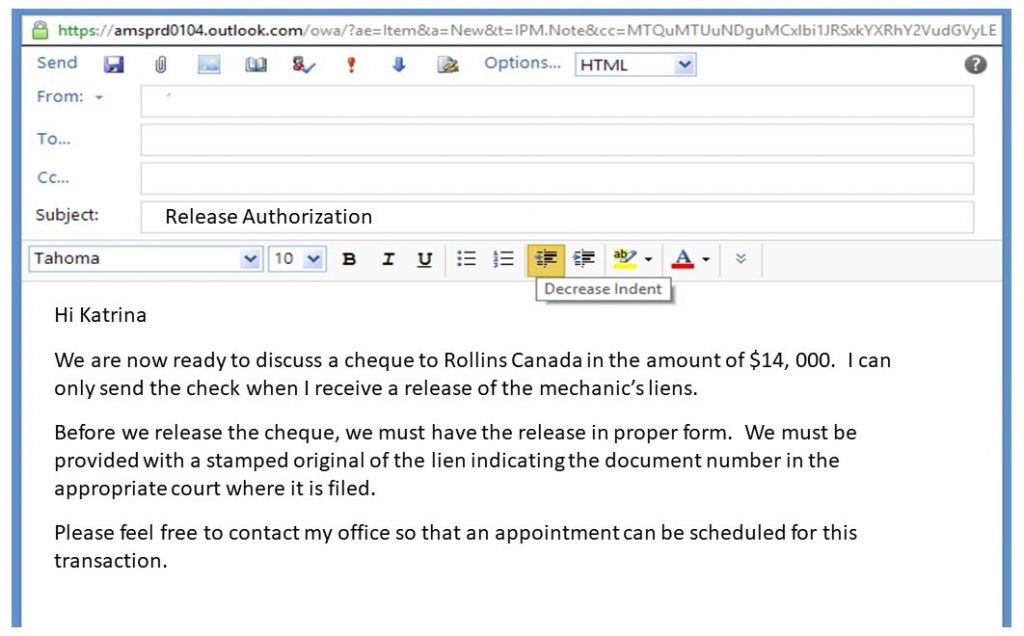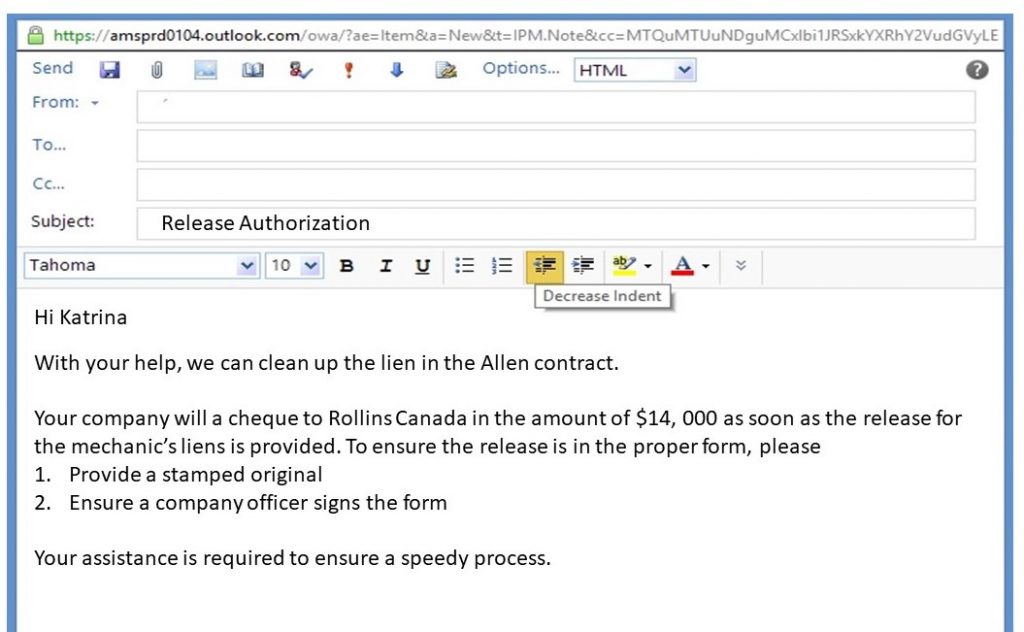3.2 Analyzing your Audience
Learning Objectives

After studying this unit, you will be able to
- analyze primary and secondary audiences using common profiling techniques
- adjust writing style according to audience size, position relative to you, knowledge of your topic, and demographic
Introduction
The first commandment in any business is to “Know thy audience.” Any act of communication success depends entirely on how well the sender tailors the message to meet the needs and expectations of the audience. A writer should always adjust the message, content and style to what is known or can guess about the audience. A writer should communicate to a customer differently than to a co-worker, and different again when communicating to a manager or to the CEO. In each case, the content, tone, word choices (diction), grammar, and overall style (formal or informal) will change according to the audience.
Understanding how to compose the most appropriate message for an audience takes skill and consideration. However, audience profile allows for effective business messages that achieve their communication goals. When profiling an audience, ask the following questions:
- How big is the main audience? Is it one or two people, a small group, or the general public?
- Who is the primary or secondary audience?
- What is the professional or personal relationship to the organization?
- How much do they already know about the topic or message?
- What is the audience demographic—i.e., their age, gender, cultural background, educational level, and beliefs?
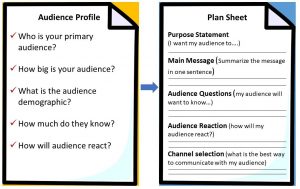
The following subsections delve further into these considerations to help you answer the above questions in specific situations.
Profiling the Audience
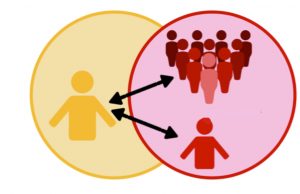
Writing for Audiences of Various Sizes
Writing to one person, a group of people, or the general public requires a different writing style. your writing style to accommodate a larger audience. When emailing one person, for instance, you can address them by name in the opening salutation and continue to use the second person singular you throughout. However, when writing for a larger group, a more general and accessible language is required. When writing for the consumer public, in a blog on a company website, language must be as plain and accessible as possible. In Canada, the public includes readers who will appreciate that you use simple words rather than big, fancy equivalents because English maybe the second or third language. Indeed, the Government of Canada has published a handy guide for how to write accessibly in plain language.
Writing Skill 5.1 – Using Simple and Familiar Language: To effectively communicate with your audience, use plain language and familiar words. By using everyday familiar words, the audience will understand the message easily and quickly. Use jargon only when the audience will understand these specialized terms. When, complex words and difficult concepts must be included, illustrate them with examples and provide a glossary when it is necessary to use several such words/concepts. Use concrete rather than abstract words and give explicit information (e.g., “car crash” rather than “unfortunate accident”). Finally, choose one term to describe something important and stick to it; using various terms to describe the same thing can confuse the reader
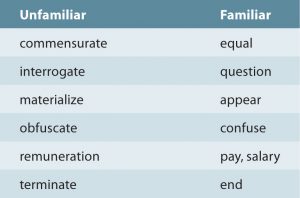
To reinforce these lessons on plain language, you can examine US Government resources on the topic such as the “Principles of Plain Language” PowerPoint on their Tools page (PLAIN, 2011) and do a selection of plain language exercises (PLAIN, n.d.).
Writing Skill 5.2 – Bias Language: When writing to large audiences, language must be unbiased in terms of gender, ethnicity, age, ability, or orientation. Communicators want to be inclusive to members of all groups. When communicating to or about a large group of people, using singular pronouns like he, his, or she and her would exclude half of the audience. Thus, using gender-neutral plural pronouns such as they, their, and them is preferable. In addition, when identifying people by their role, use non-gender-exclusive equivalents. See Queen’s University’s (2014) Inclusive Language Guidelines page for more on avoiding bias in your writing.
[table id=1 /]
Writing Skill 5.3 – English idioms: The larger the group, the more careful you must be with using unique English idioms as well. Idioms are quirky or funny expressions we use to make a point. If you wanted to reassure a customer who recently immigrated from North Africa, for instance, before explaining an automotive maintenance procedure unique to Canadian winter weather and said, “Hey, don’t worry, it’ll be a piece of cake,” they may be wondering what eating cake has to do with switching to winter tires. Likewise, if you said instead that it’ll be “a walk in the park,” they would be confused about why they need to walk through a park to get their radials switched. Calling it a “cakewalk” wouldn’t help much, either.
These expressions would be perfectly understood by anyone who has been conversing in English for years because they would have heard it many times before and used it themselves. In the case of using them around EAL (English as an additional language) speakers, however, you would be better off using the one word that these idioms translate as: easy. Again, the whole goal of communication is to be understood, so if you use idioms with people who haven’t yet learned them, you will fail to reach that goal. See www.theidioms.com for a wide selection of English idioms and their meanings.
Test your knowledge of English idioms by playing the matching game below.
https://quizlet.com/504439289/match/embed?i=scld6&x=1jj1
Primary and Secondary Audiences
Your primary audience is the person or group the message is created for; the intended receiver of the message. The primary audience is the decision-maker who will act or not act as a result of the message. Anyone else who may read or listen to the message in the secondary audience. The secondary audience falls into two categories. First, those who will influence the primary audience to make a decision; second, those who will be affected by the decision of the primary audience. Consider the situation below to determine the primary and secondary audiences.
Always consider secondary audiences for any message. Writers have little-to-no control over who sees a message. An email can be forwarded, and text or voicemail messages can be shown or played. Before sending that email or text, or leaving that voicemail in professional situations, always consider how it would be received by both the primary and secondary audiences.
Audience and Position
Just as you might wear your best clothes for an important occasion like a job interview or wedding, you must respectfully elevate the formality of your language depending on the perceived importance of the person you are communicating with.
Employers and clients can be judgmental. An employee’s writing represents the company to clients and other stakeholders (Wiens, 2012). Formality in writing requires correct grammar and punctuation, whereas more casual writing takes liberties such as using sentence fragments and contractions. The degree of formality in language will depend on your internal and external audiences. Business communications have three levels of formality depending on who will receive the message: informal, semi-formal, and formal. Whatever the level of formality, always remember language must befit the context of the workplace.
Informal Language: The lowest level of formality occurs inside a company when communicating across (between co-workers) or downward (to rank-and-file employees). Here, informal communication can be used in memos, emails, and text messages. When we put pen to paper, informal communication means, use of first-person pronouns, contractions, active language, and conversational language is accepted.
Semi-Formal Language: The next level of formality is used when communicating externally or when communicating internally upwards (to a manager and other executives). Letters, proposals and reports are some documents that required semi-formal language. Semi-formal language involves reducing the use of first-person pronouns, contractions, and conversational language.
Formal Language: The highest level of formality is used when communicating to national or international audiences. A high level of formality means eliminating first-person pronouns, contractions, and idioms. Formal language also involves using third-person pronouns and more passive than active writing. Finally, using words that when defined in a dictionary or translated through an app conveys the same meaning as the communique.
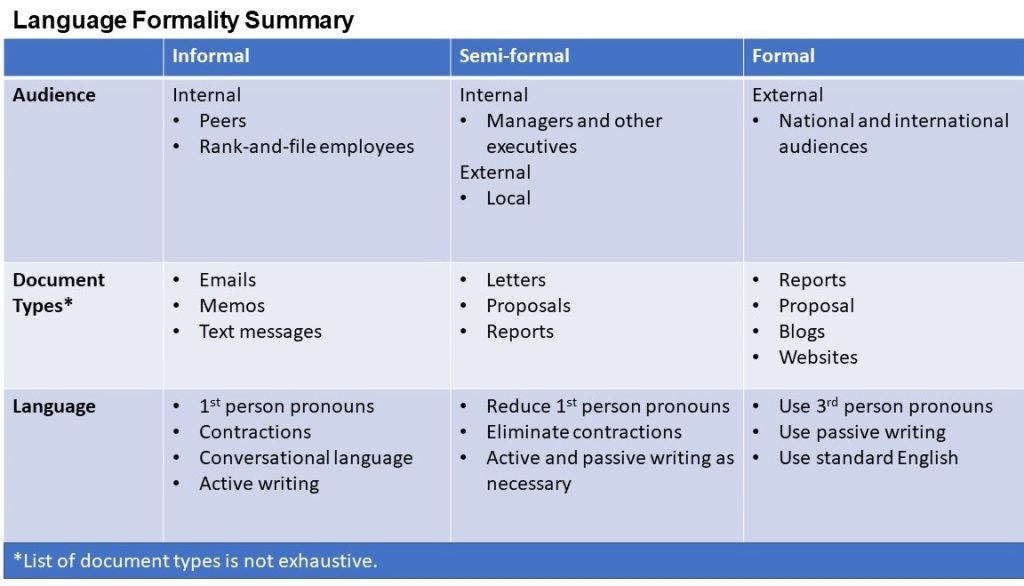
Formality in writing also involves carefully selecting words. Word choice is called “diction”. The words used when writing a co-worker should be different from the words used when writing your manager or a customer. Table 5.2 provides word choices that reflect informal, semi-formal and formal language. Understanding the audience will ensure your choice of words is always right for the situation.
Table 5.2 Word Choices Along the Formality Spectrum
| Informal / Slang | Semi-formal / Common | Formal / Fancy |
| kick off | begin / start | commence |
| cut off | end | terminate |
| put off | delay | postpone |
| awesome / dope | good | positive |
| crappy / shoddy | bad | negative |
| flaunt | show | demonstrate |
| find out | discover | ascertain |
| go up | rise | increase |
| fess up / come clean | admit | confess |
| mull over | consider | contemplate |
| bad-mouth / put down | insult / belittle | denigrate |
| plus | also | moreover |
| jones for | need | require |
| put up with | endure/suffer | tolerate |
| leave out / skip | omit | exclude |
| give the go-ahead / green light | permit | authorize |
| loaded / well-heeled | wealthy/rich | affluent / monied |
| deal with | handle | manage |
| pronto / a.s.a.p. | now | immediately |
| muddy | confuse | obfuscate |
Audience Knowledge
Understanding how much information the audience knows is important so that the correct amount of information is provided: not too much and not too little. A safe assumption about a professional audience is that they are busy and do not have time to read unnecessary information. Too much information wastes the reader’s time, insults their knowledge, and wastes the writer’s time. On the other end of that spectrum, writing too little assumes the audience knows more than they do. A lack of necessary information in a message can lead to errors due to confusion, a waste of time as readers request clarification or misunderstanding based on lack of information. Remember, the goal of communication is for the receiver to understand information as intended by the sender. Understanding how much information the receiver requires will help achieve this goal.
Appropriately gauging your audience’s level of knowledge extends to the language you use. Every profession has its jargon, which is the specialized vocabulary, shorthand code words, and slang used among colleagues with the same discipline and specific education. Jargon saves time by making elaborate descriptions unnecessary and is useful among people who speak the same language.
Audience Demographic
The previous subsection explained the necessity of gauging your audience’s level of knowledge in a given subject area, and that extends to their more general level of education as well as other demographic factors such as age, gender, religion, income, location, and so on. Demographic information is quantifiable, countable and measurable.
Depending on your profession, you may have to deal with people of all ages and levels of education from elementary school children to the elderly. Understanding the audience’s demographic data provides insight and allows a message to be adapted to meet the wants and needs of a specific audience.
Try not to stereotype or make assumptions based on demographic information. People are complicated. Thus, being respectful towards an audience is key to effective communication.
Writing Skill 5.4 – Highlighting Reader Benefits: Whenever you need to convince an audience to use a service, buy a product, or follow a policy, it’s effective to first explain what benefits the audience will receive from the action. Performing audience analysis can help define reader benefits for informative and persuasive messages by uncovering factors that will motivate readers to do or not to do an action. Writing reader-oriented messages means that you write from the perspective of the reader and consider how the reader will decode the message? Keep WIIFM in mind when writing messages. Messages that do not answer the WIIFM question are often ineffective in communicating a message. Figure 5.5 provides examples of sender focus and reader focus sentences. In your opinion, which type of sentence is more effective at motivating a reader to complete an action?

Writing Skill 5.5 – “You” View: The “you” view writing technique is used to convert messages from the sender’s perspective to the receiver’s perspective. Writing in the “you” view literally means using the pronouns ‘you’ and ‘your’ to address the reader. These pronouns have a much greater impact when the message is positive or even neutral. Writing this way is counter-intuitive. It is more natural to write from our perspective and to use first-person pronouns to encode messages. However, sender-oriented messages that use first-person personal and possessive pronouns (I, me, my, we, us, and our) don’t register as well with readers because that tends to come off as being self-involved. Watch the video, You Attitude in Business Writing, for a further explanation of the importance of writing using the “you” view.
The trick to achieving an audience-oriented message is to catch yourself whenever you begin using first-person pronouns like “I” and “my”, and immediately flip the sentence around to say “you” and “your” instead (see figure 5.5). Messages more considerate, sympathetic, and even empathetic when your write from the reader’s perspective. In short, the “you” view helps to communicate goodwill.
Key Takeaways

-
-
- Knowing your audience by their size, position relative to you, knowledge of your topic, and demographic helps you craft your message content and style to meet their needs.
- Adapting your message to the audience increases your chance of effective communication.
- Highlighting reader benefits and using the “you” view are crucial motivators.
-
Exercises
 1. List at least three demographic traits that apply to you. How does belonging to these demographic groups influence your perceptions and priorities? Share your thoughts with your classmates.
1. List at least three demographic traits that apply to you. How does belonging to these demographic groups influence your perceptions and priorities? Share your thoughts with your classmates.
2. Recall a time when you started a new job and learned the jargon of the workplace—words that the general public wouldn’t know the meaning of, or at least the meanings you attached to them. Write a glossary listing as many such jargon words as you can along with their definitions How you would explain them to the public? Share a few with the class. (If you’ve never been employed, use a volunteer, sports, or other group activity you’ve engaged in.)
3. Review the last email you wrote. Is it written formally or informally? If informal, revise it so that it is more formal as if you were to send it to a manager or client; if formal, revise it so that it is more informal as if you were to send it to a trusted co-worker. (If you want your most recent email to remain private, search back for the one you wouldn’t mind sharing). Include the original email in your submission.
Reference
BCcampus. (n.d.). Context, audience, purpose. Business writing for everyone. Retrieved from https://pressbooks.bccampus.ca/arley/chapter/ch-3-context-audience-purpose/.
Bovee, C.L., Thill, J. V., & Scribner J. A. (2016) Business communication essentials (4th ed.). Don Mills, ON: Pearson Canada Inc.
Communication Canada. (2003, May). Successful communication tool kit: Literary and you. Government of Canada Publications. Retrieved from http://publications.gc.ca/collections/Collection/PF4-16-2003E.pdf
The Conference Board of Canada. (2013). Adult literacy rate—low-level skills. How Canada Performs. Retrieved from http://www.conferenceboard.ca/hcp/details/education/adult-literacy-rate-low-skills.aspx
Guffey, M., Loewry, D., & Griffin, E. (2019). Business communication: Process and product (6th ed.). Toronto, ON: Nelson Education. Retrieved from http://www.cengage.com/cgi-wadsworth/course_products_wp.pl?fid=M20b&product_isbn_issn=9780176531393&template=NELSON
Gregg Learning. (2018). You attitude in business writing [Video file]. Retrieved from https://www.youtube.com/watch?v=mJK7hMXehj0.
Lublin, D. (2012, November 8). Do employers have a right to spy on workers? The Globe and Mail. Retrieved from https://beta.theglobeandmail.com/report-on-business/careers/career-advice/experts/do-employers-have-a-right-to-spy-on-workers/article5104037/?ref=http://www.theglobeandmail.com&
Meyer, C. (2017). Communicating for results (4th ed.). Don Mills, ON: Oxford University Press. Retrieved from https://oup-arc.com/access/meyer-4e-student-resources#tag_case-studies
PLAIN. (n.d.). Principles of plain language: Exercise packet. The Plain Language Action and Information Network. Retrieved from http://www.plainlanguage.gov/resources/for_trainers/plainfiles/exercises_all_writing_classes.pdf
PLAIN. (2011, March 27). Tools from PLAIN. The Plain Language Action and Information Network. Retrieved from http://www.plainlanguage.gov/resources/for_trainers/PLAIN.cfm
Queen’s University. (2014, April 9). Inclusive language guidelines. Style Guide. Retrieved from http://queensu.ca/styleguide/inclusivelanguage
What's In It For Me


